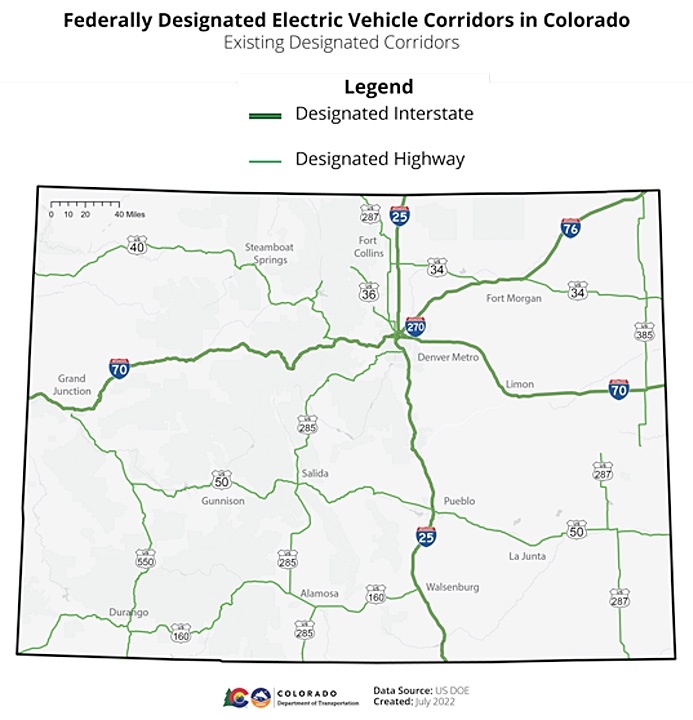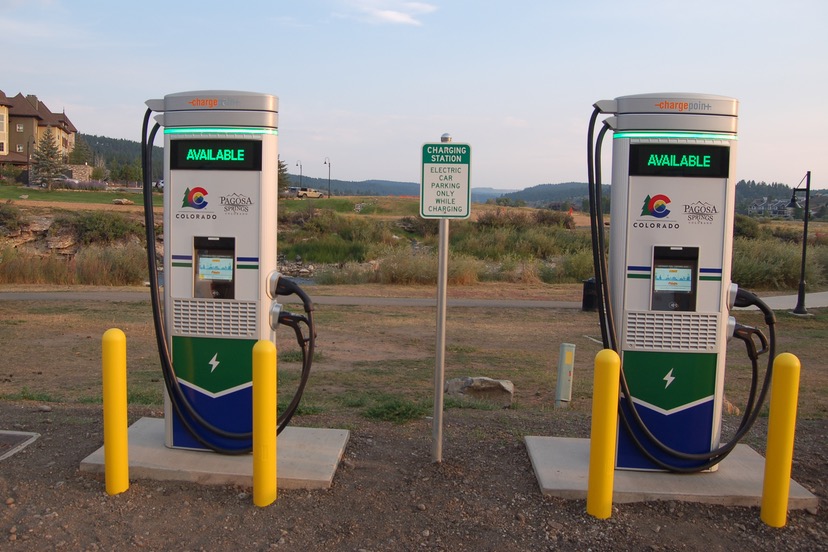If life were simple… we would all be driving electric cars by now.
Ha ha. Just kidding!
If life were simple, we wouldn’t need cars at all.
My car is proof that life isn’t simple, or inexpensive. Have you seen the price of gas lately? Insurance? Tires? Of course you have. We all have. (And I’m not even counting the caramel latte I need to keep me awake.)
Right about now, I wish my car were an EV, but it’s not. But even if it were an EV, life wouldn’t be simple. Or inexpensive.
For the past few years, the Town of Pagosa Springs has allowed a company named ChargePoint to place EV charging stations in Centennial Park. (See photo above.) The Town also helped pay for the installation of these devices, because the future is electric. Whether we like it or not. Because there’s a carrot, and there’s a stick.
And I don’t mean a ‘stick’ like in a ‘stick shift’ because EVs have only one gear. So those of us who’ve spent the time to become expert at shifting gears to achieve maximum acceleration, have ultimately been wasting our time. No stick, no clutch.
The ‘stick’ in this situation, is the ‘stick’ that’s the opposite of the carrot.
The Pagosa charging stations are part of a plan by the state of Colorado, to help the federal government spend $5 billion to ‘electrify’ major highways throughout the country, so an EV owner can get from Point A to Point B, without running out of juice. The Colorado portion of that $5 billion is about $57 million, and is aimed at placing charging stations along the following highways:

As we can see, Highway 160 is one of the state’s officially-designated highways, where — someday — you will be able to drive all the way from Walsenberg to the furthest southwest corner of the state without running out of electricity. One of your re-charging stops on that trip might be in our very own Centennial Park. Or maybe in Durango, where you have your choice of 28 EV charging stations. Looking at the map, I feel sorry for the EV drivers who are thinking about taking Highway 287, headed north. Or Highway 385 headed south.
Strategically-placed charging stations are the ‘carrot’.
As a famous person once said, ‘Strategy is in the eyes of the beholder.’ Some of the carrots might end up in unexpected places.

The ‘stick’ — the opposite of a carrot — takes the form of plans by various state governments, to eventually prohibit the sale of new gas-powered cars. (Whether the sale of gasoline will also be outlawed is not yet clear. But one thing is obvious: my gas-powered car is going to become a collector’s item in the not-too-distant future — so I can tell you right now, I will not be skimping on the oil changes.)
One of Governor Jared Polis’ first acts, when he took office in 2019, was applying his signature to Executive Order B2019-002. That started the electric ball rolling, so to speak, and we now have a 2023 Electric Vehicle Plan, which doesn’t actually prohibit gas-powered cars but sets a goal that 70% of new car sales will be EVs, by 2030.
Colorado thinks this can be achieved just with carrots. That’s going to be some expensive carrots.
For comparison, California is gearing up to actually prohibit the sale of new gas-powered cars, by requiring all new cars, SUVs and pickup trucks sold in the state to generate zero tailpipe emissions by 2035. That’s in, like, 12 years. The policy won’t take existing vehicles off the road, but car dealers will be restricted to selling electric vehicles and certain plug-in hybrids.
If that ain’t a stick, then I don’t know what a stick is.
Other states are lining up behind California’s ‘stick’ approach — Connecticut, Maryland, Massachusetts, New Jersey, New York, Oregon, Rhode Island, and Washington have announced they’ll prohibit the sale of new gasoline-powered vehicles. So has Canada.
The thing about a stick: it costs the government nothing. You simply tell people they can’t buy new gas-powered cars in the future, and everyone starts scrambling to get ahead of the electrical tidal wave.
Simple. But not simple. And not inexpensive.
Underrated writer Louis Cannon grew up in the vast American West, although his ex-wife, given the slightest opportunity, will deny that he ever grew up at all. You can read more stories on his Substack account.

